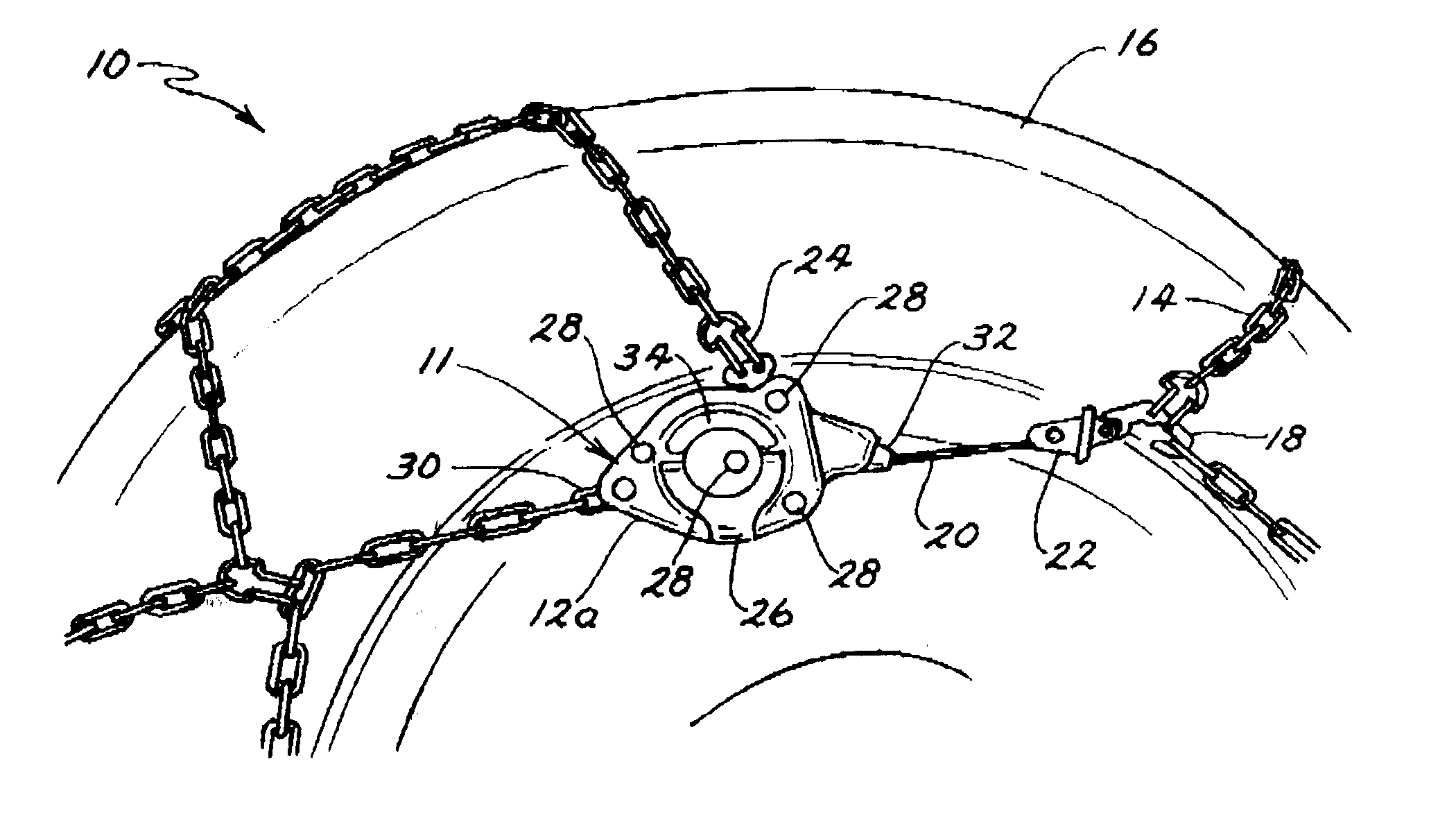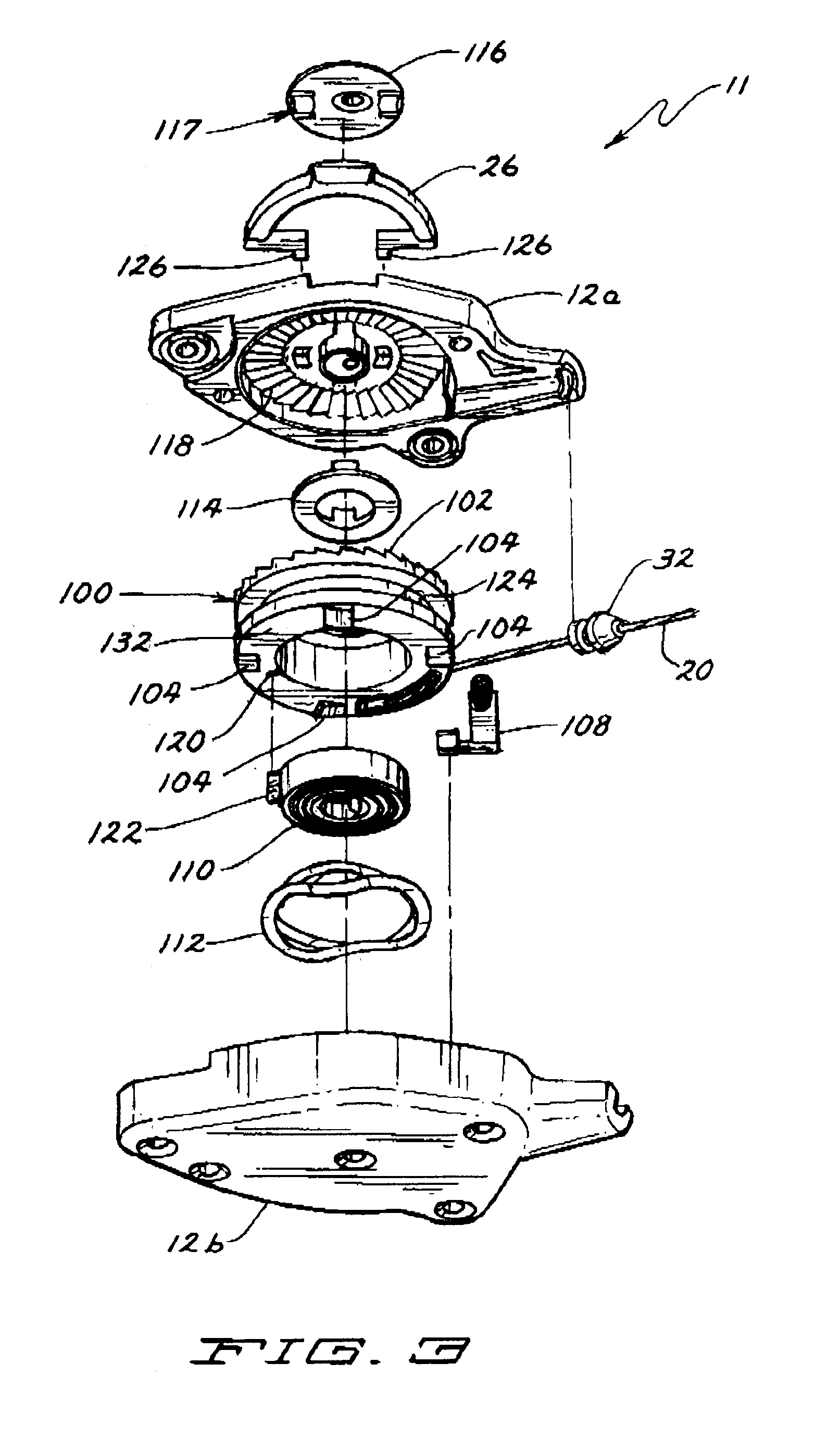Self-Tightening Snow Chain and Methods of Use
a self-tightening and snow chain technology, applied in the field of snow chains, to achieve the effect of reducing the size of the passageway
- Summary
- Abstract
- Description
- Claims
- Application Information
AI Technical Summary
Benefits of technology
Problems solved by technology
Method used
Image
Examples
Embodiment Construction
[0039] Preferred embodiments of the present invention are illustrated in FIGS. 1-16BFIG. 1 is a perspective view of a self-tightening snow chain 10 of the present invention in use on a wheel 16 (partially shown). The self-tightening snow chain 10 comprises of a snow chain 14 and a tensioning device 11. Referring now also to FIGS. 2 and 3, the self-tightening snow chain 10 has a housing 12 including a housing top 12a, an actuating lever 26, a grommet 32, and a cord 20 extending through grommet 32 and connected to a hook 18 with a first connection member 22. The hook 18 connects to the chain 14 of the self-tightening snow chain 10, to supply tension to the chain 14. In this embodiment, there is a second connection point 24 and third connection point 30 where parts of the snow chain 14 are secured to the housing 12. Rivets 28 are placed through rivet receiving openings or recesses 29 to secure the housing top 12a to the housing bottom 12b, although any other fasteners such as threaded ...
PUM
 Login to View More
Login to View More Abstract
Description
Claims
Application Information
 Login to View More
Login to View More - R&D
- Intellectual Property
- Life Sciences
- Materials
- Tech Scout
- Unparalleled Data Quality
- Higher Quality Content
- 60% Fewer Hallucinations
Browse by: Latest US Patents, China's latest patents, Technical Efficacy Thesaurus, Application Domain, Technology Topic, Popular Technical Reports.
© 2025 PatSnap. All rights reserved.Legal|Privacy policy|Modern Slavery Act Transparency Statement|Sitemap|About US| Contact US: help@patsnap.com



